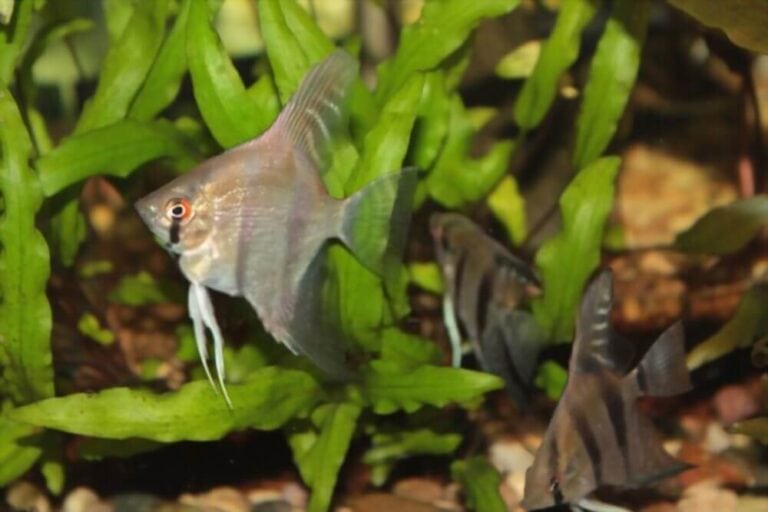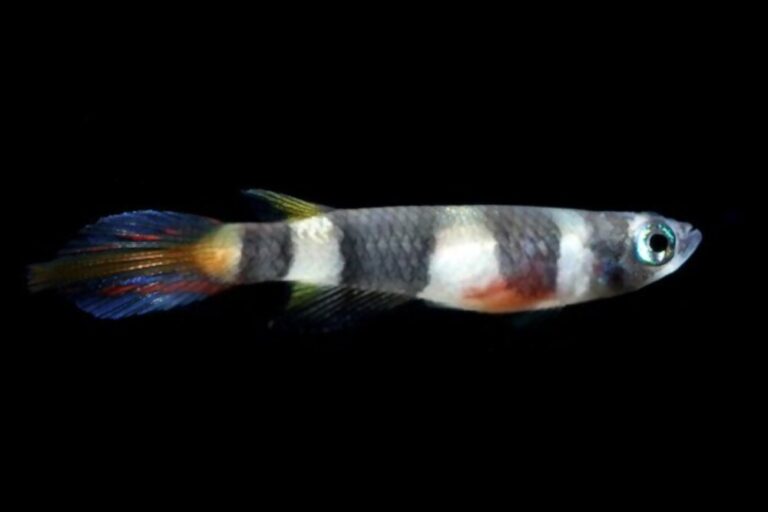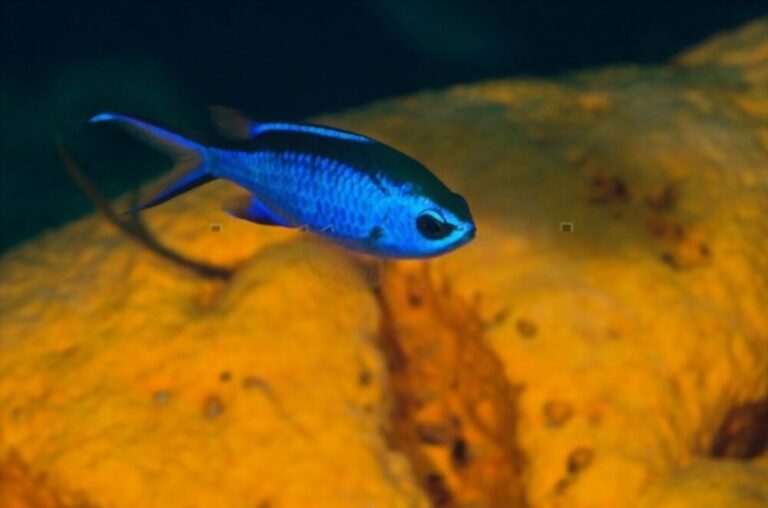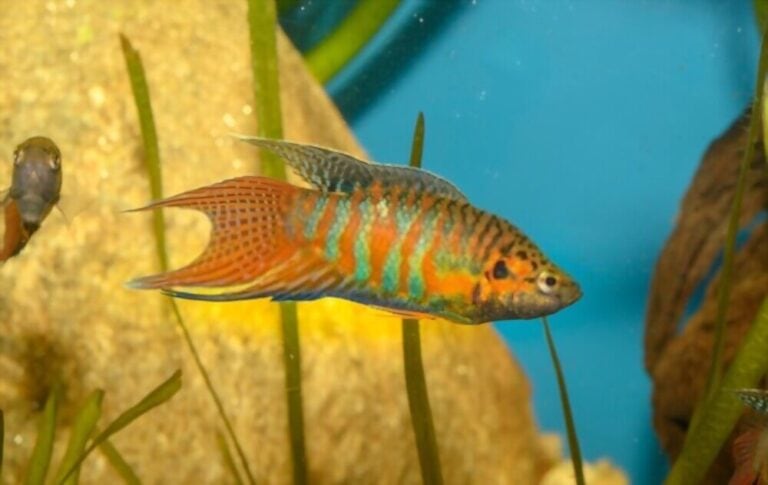Pinnatus Batfish Guide: Size, Behavior, Feeding, & Tank
The Pinnatus batfish is a type of saltwater fish, scientifically called platax. They lie in the family of Ephippidae, and there are 5 well-known species of batfish.
The basic color of the Pinnate batfish is dark black with orange stripes in the upper body. That’s why pinnate is one of the most important fishes for enhancing every fish aquarium. But keeping them in captivity is not as easy as most fish.
You should give a mixed diet with meaty foods such as scallops, shrimp, vitamin-rich carbohydrates, and preserved herbivores preparations. The pinnatus should eat three times a day.
Usually, Batfish can live up to 60 to 144 months but can be lived up to 168 months old.
Pinnatus Batfish Size
Recognized by several names, including Red-Stripe, Pinnatus, Shaded, Dusky, Red-Faced, Long-Finned, or Red-Finned Batfish, the Pinnate can be up to 20 inches long.
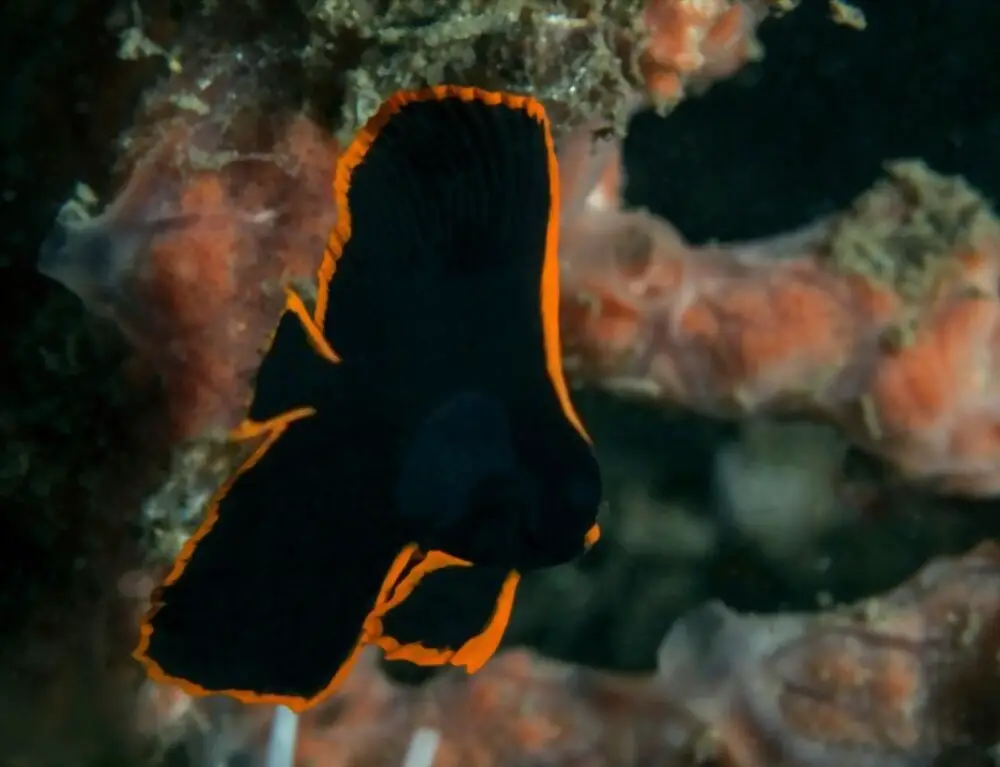
The body length is about 50 cm, up to a maximum of 70 cm. A mature pinnatus batfish can reach an average size of over 30 cm in a breeder tank with a fin’s height of up to 46 cm.
Batfish Life Cycle – Life Cycle & Lifespan of Different Batfish Species
Origin of Pinnatus batfish
The fish is distributed in the Pacific Ocean region of India, including South Africa, East Africa, Madagascar, Reunion, Mauritius, Seychelles, Oman, Maldives, Christmas Island, Cocoa Islands, Iran, Pakistan, India, Myanmar, Thailand, South Korea, Japan, Taiwan, Philippines, Vietnam, Malaysia, Indonesia, Papua New Guinea, Australia, Marshall Islands, Mariana Islands, Micronesia, Palau, Niue, Guam, Vanuatu, and other sea areas.
Pinnatus Batfish Appearance
The body is tall, disc-shaped. Body shape varies significantly with age. The mouth is small. The snout is very short. Teeth are bristle-shaped, from the outer row slightly enlarged, with notches at the apex. Gill stamens are very short, and the overlay is smooth.
There are 24 vertebrae, of which 14 are caudal. The head is covered with scales on the sides. The soft dorsal and anal fins in front are very high, with a thickened base. The pectoral fins are short. The caudal fin is slightly round in shape.
Abdominal with 1 prickly ray and 5 branched rays. In young fish, the ventral fins are very elongated. Young brown fish are having an orange stripe along the edge of the body. Adult fish are dull silver.
The fish’s body is flat on the extreme side, showing a diamond shape, with a small mouth and a slight protrusion.
The juveniles are black, with orange edges on the head’s back and the fin’s edges, the adult fish turn yellowish-brown with 2 dark horizontal bands.
The dorsal fin, ventral fin, and anal fin are elongated orange sickle-shaped. The caudal fin is round, the jaw has slender, flat, tricuspid teeth. There are no teeth in the jawbone or yak.
The anterior gill cover is smooth, and the gill cover is free of spines. 5 dorsal fin spines; 34 to 39 dorsal fins; 3 anal fin spines; 25 to 29 anal fins, up to 50 cm in length.
The Appearance of Full Grown Pinnatus Batfish
Indifference, mature Pinnate batfish appear to be completely different from the juvenile batfish. The attractive, dramatic colors of the baby pinnatus batfish become dim when the fish matures and finally disappears abundantly.
Juveniles have a beautiful red border on their body and wings. However, this usually disappears as an adult. The body has straight brown and brown silver bands.
Adult pinnatus batfish looks like a triangular shape because of its long flowing fins. The fish’s rich black color gradually fades to a dark silver color.
Most mature pinnatus batfish have dark bands along with their eyes, and also, two other bands move along with the body of pinnate batfish.
What Do Pinnatus Batfish Eat?
Providing wild batfish with their nutritional needs was a problem for aquarists. In the past, most juveniles survived no more than a few weeks after adulthood, especially since their diet was insufficient for their needs.
It is challenging to feed the pinnatus batfish in the breeder tank, even for some trading enterprises. Small live shrimp is a popular food that complements their diet.
Captured wild pinnatus batfishes can grow by feeding them fish of fresh and saltwater. There is more chance for life if your fish learn to eat live food.
Batfish was considered carnivores for years. However, recent studies proved that these species also eat algae. You have to give food in small amounts to your pinnatus batfish many times a day.
Adult pinnatus batfish should be fed with scallops, live shrimp, mussels, and small live shrimp. To supply an appropriate amount of nutrition to them, seaweed and algae should comprise their diet.
Adult pinnatus batfish are very slow to take food. Due to this reason, they are mostly in hunger. That’s why to keep an eye on your pinnatus batfish to make sure it gets a full serving of its food.
It is also possible to keep wild pinnatus batfish with other small batfishes and feed them together.
Behavior & Habitat of Pinnatus Batfish
Pinnatus batfish is a calm, moderate-moving species that is very friendly to other fish that occur in their own species and come from identical environments.
These fish occur at depths of up to 20 meters. Pinnatus batfish are always searching for ledges and caves, these fishes travel along with reefs and always like shallow water.
Juveniles mainly swim alone in shallow seas and inhabit coral reefs or rocks. To avoid being preyed on by big fish, they often lie on their sides and move their fins in a wave shape to imitate poisonous flatworms to protect themselves.
Adults like to swim in groups on the outer edge of coral reefs, and they come out day and night. The personalities are very “approachable,” and it is easy to get close to divers.
Pinnatus Batfish Care
Pinnatus batfish are challenging to keep in the breeder tank and traditionally do not survive long after childhood. It is possible to grow one of these pinnate batfishes by keeping them properly and providing appropriate nutritional food.
Pinnatus Batfish Tank
In the wild, pinnate batfish can grow up to 2.5 feet, although you have to keep only small specimens in the breeder tank.
Therefore, the size of the tank could fit on it. Pinnatus batfish need a home breeder tank of at least 760 liters and preferably more. The dimension of tank height should also be deep enough to take one of the tall batfish.
Keep in mind that many fish diseases are caused by stress, and the wrong size of a tank with insufficient swimming space is a major cause of stress.
Pinnatus Batfish Tank Condition
Pinnatus batfish are not appropriate for open breeder tanks because they feed on invertebrates and corals. They hide under the rocks on the border of the reef.
But you can hold one of these ocean charmers by creating conditions similar to their natural habitat. To reproduce the natural environment of the fish, you need to use a sand substrate.
Pinnatus Batfish required enough free space in the breeder tank for swimming and some deep places where they can hide when in hazard. Caves, overhangs, and Live rock are ideal for this.
However, be careful not to turn the tank full of these things so that the swimming area is not blocked, and avoid adding rocks in bulk quantity as it may cause serious injury to your fish.
Pinnatus batfish are saltwater fish that need a saltwater environment, although they sometimes occur in brackish water.
Temperature & Water Condition
The water temperature should be between 25 °Celsius and 27 °Celsius. The potential hydrogen value should be in the middle of 8.2 and 8.4, an alkalinity value should be in the middle of 10, 12 dKH, and the SG is between 1.019 and 1.026.
You required a good filtration system consisting of mechanical, biological, and chemical equipment to keep the water clean.
If you want perfect tank conditions for the pinnatus batfish, you should have a container with a quality protein shaker and a dry/wet filter function. To minimize the risk of diseases at the tank, you can also use UV sterilizers that kill the parasites responsible for the disease.
Is Pinnatus batfish suitable for an aquarium?
The pinnatus batfish are hard to hold in an aquarium and are only suggested to experienced aquarium lovers.
However, it is hard to keep these fish and are generally calm fish. They are not very good in reef aquariums since they tend to eat invertebrates like anemones and corals.
Buying and selling of Pinnatus batfish
In many parts of the world, pinnatus batfish are available for selling and buying. The hobbyists like to buy batfish for their aquarium because it is fun to see the aquarium’s pinnate batfish.
Nowadays, it is business to sell batfish in every part of the world because it is a good profitable business due to increasing demand for pinnatus batfish.
FAQ
How Much Is A Pinnatus Batfish (Price)?
The price of pinnatus batfish is not constant. It varies with the origin and the size of pinnate batfish. The prices may fluctuate as per your locality and region.
| Description | The average price in $ |
| Medium from 2 to 4 cm, Western Pacific | 90 |
| Large from 4 to 6.5 cm, Western Pacific | 100 |
| X Large from 6.5 to 7.5 cm, Western Pacific | 130 |
| XX-Large from 7.5 to 10 cm, Western Pacific | 160 |
How Big Do Batfish Get?
In the breeder tank, the Pinnatus fish can grow up to 75 cm long. These batfish are also tall that required a large tank to fit their size pleasantly.
Are Batfish Edible?
Not all, but some types of batfish are edible means they are safe to eat, which includes silver batfish. This is a great eating fish.
Summary
The pinnatus batfish is one of the most famous and striking species, also called Platax pinnatus. It has a firm black body and a burnt red/orange appearance. It sparkles through the breeder tank.
These are unique, engaging, and fun (some are known to take a bite of food out of your hand). They look like brittle, small sensitive fish as the juveniles, but the proper care for pinnatus batfish can be large and long-living fish.
It is challenging to keep in an aquarium and often refuses to eat. This fish must be equipped with a 760-liter tank and sufficient free space for swimming.
The water temperature should be around 27 °C, with gravity between 1.018 and 1.025 maximum. Don’t forget to bring the ammonia and nitrite levels as close to 0 as possible. 10 ppm is permitted for the nitrites.
Unlike other Batfish, this fish is quite rare and needs different protection. It is not a good reef inhabitant. It loves to eat many species of sedentary invertebrates, including anemones and corals. Like all Batfish, this is sensitive to ich.
